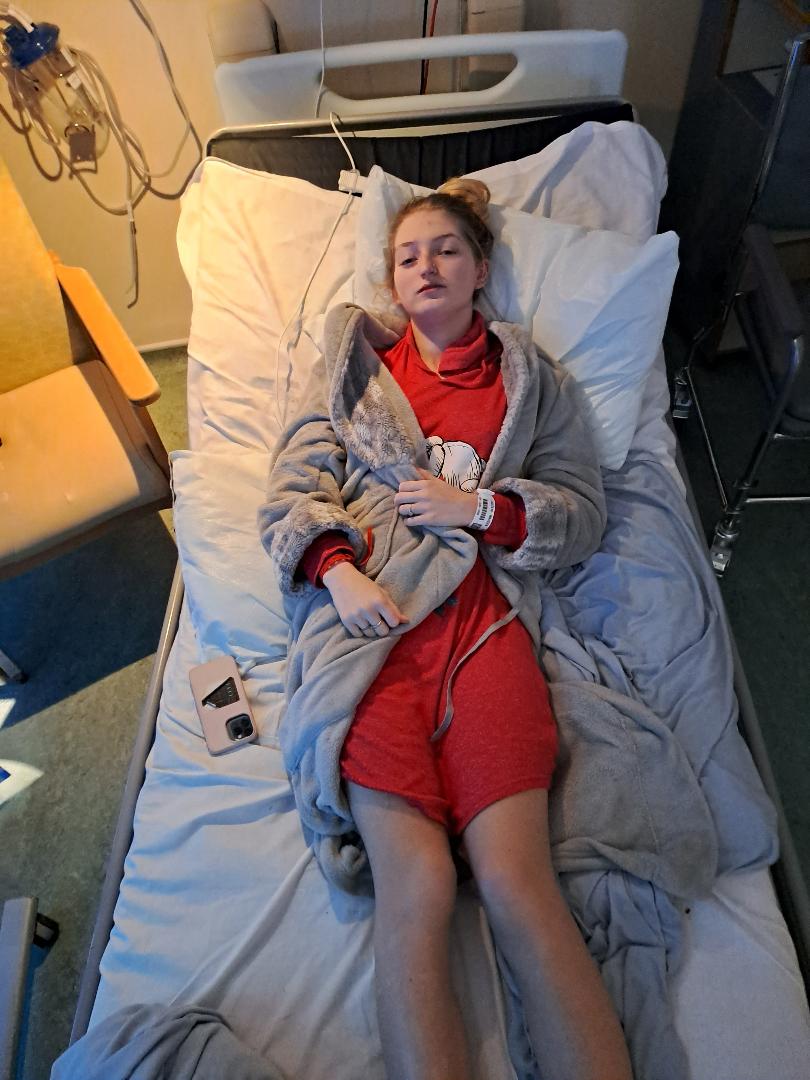But a rare condition has left Tia, 18, having to use a wheelchair.
She began to experience some side effects in the days after she started taking prescribed antibiotics, but soon feared she was dying when her legs stopped working, terrifying her mum Antonella.
Now, more than a year later, Tia has finally been diagnosed with functional neurological disorder.
It causes a range of disabling symptoms, from weakness and tremors to speech problems. A stressful event, past trauma, migraine, vaccines or medication can trigger FND, but its exact causes are unknown.
It is estimated that up to 120,000 people in the UK have FND, and there are a further 10,000 new cases per year, according to The Brain Charity. But most people have never heard of it.
Tia, from Bournemouth, says: “My brain doesn’t work like it used to. I still get confused.
“I can only walk short distances. Anything longer and I have to use a wheelchair. I also get exhausted easily and suffer terrible pain in one of my legs. I can’t work or go out by myself.
“I’m frightened that I will never be the person I once was.”
Tia was prescribed the antibiotic metronidazole for a skin infection in January last year.
She started suffering severe headaches, nausea and sensitivity to light within hours of taking her first dose, but wasn’t initially concerned.
Shake violently
Days later things took a turn for the worse.
She became confused and struggled to talk and, within a week, couldn’t walk.
Tia, 17 at the time, said: “It was terrifying. I went from being a healthy, happy teenager, who liked going for a run and to the gym, to being virtually paralysed from the waist down.”
She was twice sent away from A&E before being taken back in an ambulance on the advice of the NHS 111 service.
Tia, then a music college student, remembers little of the next eight days in hospital.
Mum Antonella, 59 and a freelance writer, says: “At our first visit to A&E, Tia could only walk as if she were on a tightrope, putting one foot in front of the other.
“But after blood tests came back clear for infection we were sent away after four hours.
I went from being a healthy, happy teenager, who liked going for a run and to the gym, to being virtually paralysed from the waist down
“The next day she could not walk at all, and I had to push her into A&E in a wheelchair. Seven hours later we still hadn’t been seen.
“Tia begged to go home as she felt no one believed that she was ill. On the way home, she told me she felt she was dying, and loved me.
“I dialled 111 and spoke to a doctor who said there were ‘red flags everywhere’ and sent an ambulance to get us.”
In hospital, Tia had a battery of tests including for multiple sclerosis and a brain tumour.
Antonella said doctors told her the antibiotics could be to blame and took Tia off them.
The mental confusion, sickness, and headaches subsided so she was discharged, but she still could not walk.
She said: “I was told I should recover completely but I didn’t.
‘Bedridden’
“The first month I was bedridden and the next four months I was in a wheelchair.
“Eventually physio enabled me to stand and take a few steps. But my right leg would then shake violently and collapse.
“I was referred twice to a neurologist last year, but they refused to see me.
“They said it was not neurological, even though they had never met me.”
FND sufferers often face a fight to be diagnosed. Tia finally saw a specialist in March, who diagnosed her “within minutes”.
It is a largely misunderstood condition, which is sometimes dismissed by medical professionals.
A stressful event, past trauma, migraine, vaccines or medication can trigger FND, but the exact causes are unknown.
An estimated 50,000 to 100,000 adults and up to 20,000 under-16s live with FND, according to The Brain Charity.
Tia said: “It was explained to me as my brain ‘misfiring’.
“When I learnt about it, it made sense, because although I’ve recovered a lot, I still cannot move my right hip and leg properly.
Now I can only walk a few metres without using a crutch. For long distances, I use a wheelchair
“Last summer I had improved enough to be able to work at a kids’ club. But then I deteriorated, which can happen with FND.
“Now I can only walk a few metres without using a crutch. For long distances, I use a wheelchair.”
‘Horrifically hard’
Tia says the last year has been “horrifically hard”, but the talented singer, who has a large following on TikTok, now wants to use social media to raise awareness of the condition.
She says: “It’s so depressing to be stuck at home most of the time. I’m not sure I would still be here without social media and music.
“All I want to do is fully recover and be able to go for a run along the beach.
“I miss simple things like that so much.”
What is FND?
FUNCTIONAL neurological disorder is a “brain network disorder,” according to UK charity FND Action.
The brain is unable to send and receive messages correctly, affecting all parts of the body.
Some symptoms, particularly if not treated, can result in substantial disability.
Treatment includes “retraining” the brain with specialised physiotherapy, distraction techniques and psychotherapy.
But some 70 per cent of sufferers have the same or worse symptoms ten years later.
The exact causes of FND are unknown. Symptoms can appear suddenly after a stressful event or with emotional or physical trauma, including a head injury, migraine, surgical procedure or vaccination.
It can occur as a result of several factors working together, for example, the brain shutting down after perceiving a threat or trying to avoid pain as well as a genetic vulnerability to the condition.





